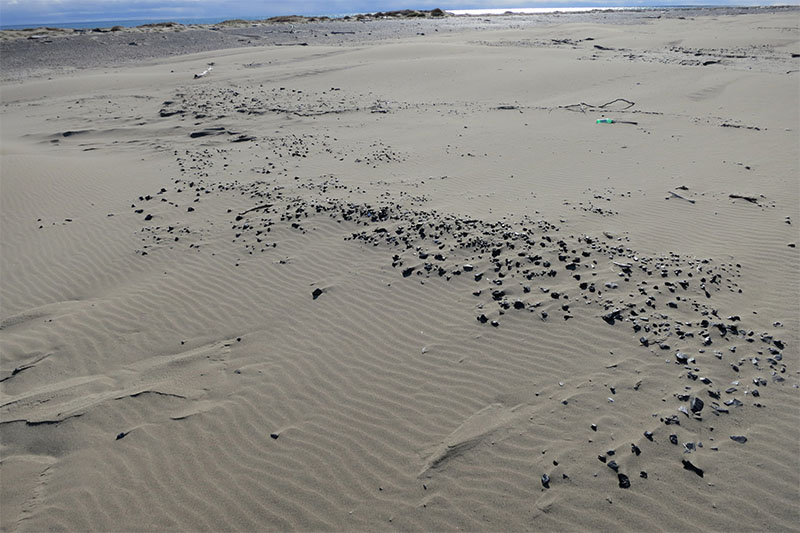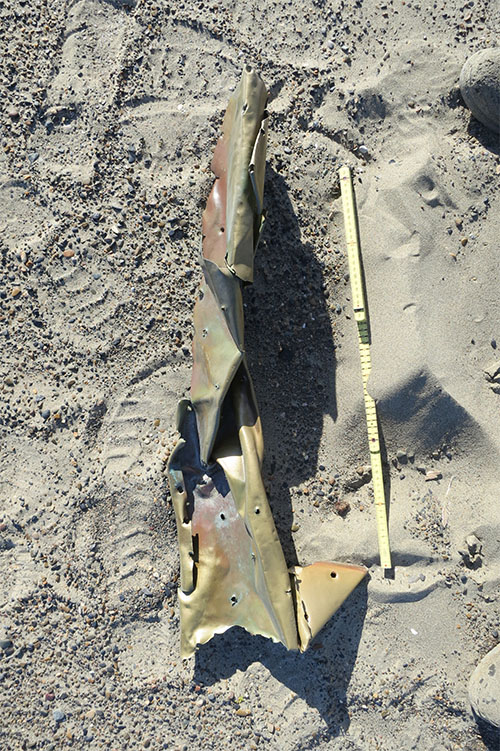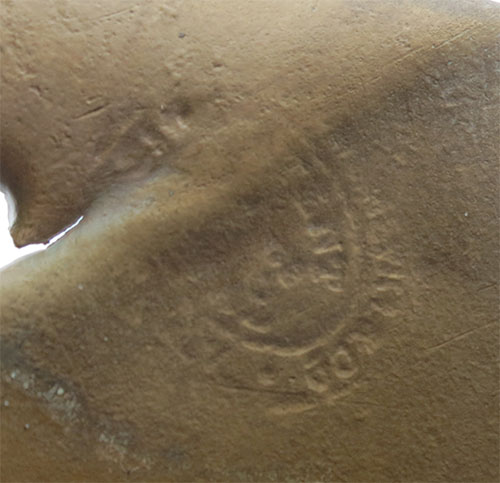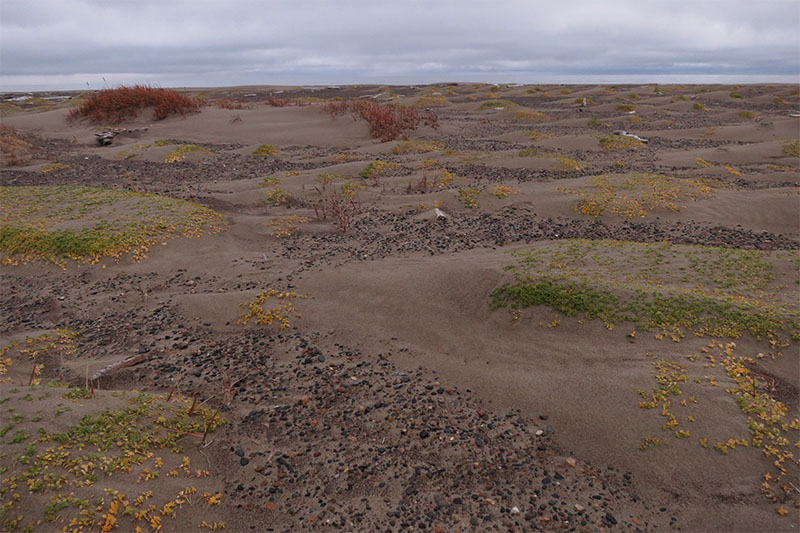
By Hans Van Tilburg, Ph.D., Maritime Archaeologist and Western Pacific Region Maritime Heritage Coordinator, NOAA Office of National Marine Sanctuaries Maritime Heritage Program
September 22, 2015

Drift of coal in the dunes. Image courtesy of NOAA/ONMS. Download larger version (jpg, 2.6 MB).
One of our tasks prior to conducting the side scan and magnetometer survey was to go ashore near Point Franklin and establish the base station for accurate navigation. The small inflatable boat was large enough for Arthur, myself, and Matt. Having two paddlers on board in addition to the boat driver proved more convenient in getting the boat onto and off of the beach in the very shallow surf zone. The Ukpik anchored near shore, we launched the inflatable boat, and were away.
The comprehensive survey of wreckage throughout the area had been completed by Randy Beebe prior to our 2015 work, so we had no need to closely document the several larger pieces of wooden wreckage we observed. But setting up the shore station did allow us to catch a glimpse of the nature of other artifacts strewn along the margins of the Seahorse Islands.

Copper hull sheathing in dunes. Image courtesy of NOAA/ONMS. Download larger version (jpg, 4.6 MB).
We found several pieces of copper sheathing, once used to protect wooden hulls from marine growth and the shipworm. Underwater, copper sheathing remains shiny as it is toxic to marine species and seldom covered in bio growth. These sheathing portions lay crumpled like paper in the sand dunes, one with a semi-identifiable patent stamp in one corner.

Patent stamp on sheathing section. Image courtesy of NOAA/ONMS. Download larger version (jpg, 514 KB).
Also, covering large wind-swept swaths of the beach were pieces of coal. I’ve seen coal on many, many wreck sites, for it is not necessarily limited to steam vessels. The galley will burn coal for cooking, the focs’l might have a stove for heat, auxiliary steam boilers burned coal to drive the winches on tall sailing ships. Coal is simply fuel, energy... a necessity for Arctic travel. Being very flaky in nature, it tends to resist being colonized by corals and other marine species. And as it is only slightly negatively buoyant, it does not bury itself in sediment, but is generally caught in the crevices of the shipwreck site and then driven easily ashore by bottom currents during storms. Drifts of storm-deposited coal are a shore side feature of many wreck site areas.

Anthracite coal, on shore in abundance. Image courtesy of NOAA/ONMS. Download larger version (jpg, 2.7 MB).
To me, the landscape was also striking in that it lacked a large amount of plastic debris. Coming from the middle of the North Pacific, I am (unfortunately) very accustomed to seeing plastics of all types washed ashore on remote atolls: milk crates, sono-buoy tubes, toy army men, Bic lighters, fishing nets and lines, plastic floats, etc. It’s a shame that I had to travel all the way beyond the Arctic Circle to get away from that level of intensive plastic debris deposition…to get to a relatively plastic-less place.

Dunes and vegetation at the Seahorse Islands, August 2015. Image courtesy of NOAA/ONMS/Matthew Lawrence. Download larger version (jpg, 2.9 MB).
Soon enough, the shore station was up and running and we returned to the Ukpik, finding a way though the shore surf without being overly doused with cold Arctic water. My recollection of our very brief time on shore would not be complete without mentioning the stark beauty of the Arctic tundra and the windswept life that exists there in the dunes.